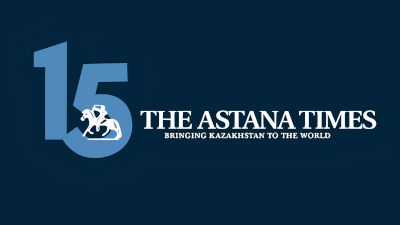ABU DHABI — I found myself exploring a new kind of sea — one composed not of water but of sunlight. Standing amidst the four million solar panels of Masdar’s Al Dhafra two gigawatt solar PV Project, located just over 30 kilometers from Abu Dhabi, the United Arab Emirates (UAE), I was awestruck by the sheer scale of innovation unfolding before me. The turquoise waters of the Persian Gulf were mesmerizing, yes, but this man-made sea of clean energy possessed a unique beauty — a testament to human ingenuity and ambition.
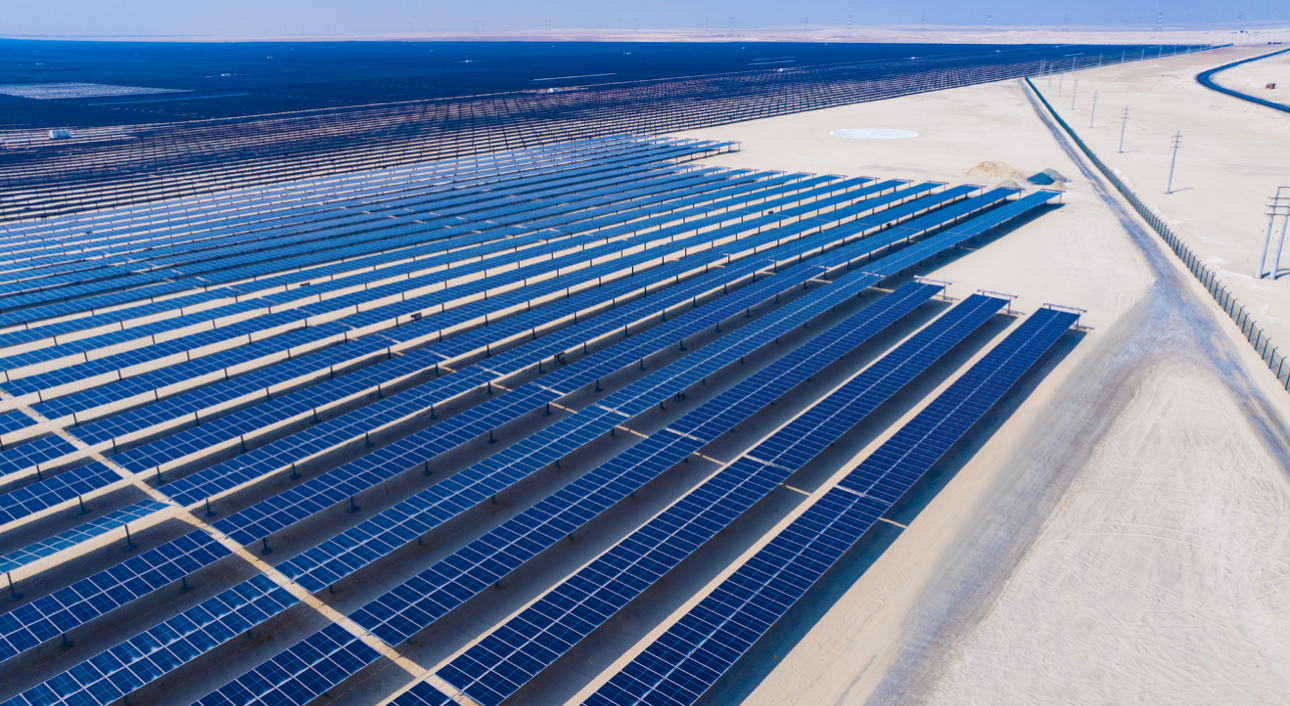
Тhe four million solar panels of Al Dhafra 2GW Solar PV Project. Photo credit: Masdar
I had the privilege of walking through this marvel of modern engineering. These bifacial solar panels capture sunlight from both sides, tracking the sun’s movement across the sky to maximize efficiency. The results are groundbreaking: a world-record low solar energy tariff of 1.32 cents per kilowatt-hour and enough electricity to power nearly 200,000 homes while displacing 2.4 million tons of carbon emissions annually.
“We’ve utilized some of the latest technologies, such as the bifacial PV modules and cleaning robots. The size of it — it’s massive. It’s around 24 square kilometers,” said Masdar’s Chief Operating Officer (COO) Abdulaziz Alobaidli.
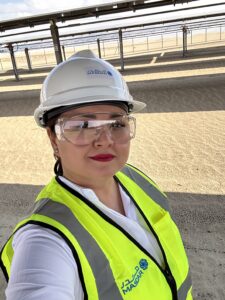
The Astana Times’ Aida Haidar contemplating this man-made sea of clean energy. Photo credit: The Astana Times/ Aida Haidar
The scale of Al Dhafra is indeed staggering. Spanning 24 square kilometers, it is the largest single-site solar power plant in the world, built in a single construction phase. Even more remarkable is its timeline — completed on schedule despite launching during the global pandemic, a feat that highlights the resilience and collaboration of the teams involved.
“The timing of this project was also interesting because it started when the supply chain was interrupted during COVID-19. With the support of partners and contractors, we’ve done a great job to bring this project on track, on time, and on budget,” Alobaidli noted.
During my visit, a rare desert rainstorm briefly paused our site tour. When I mentioned that rain is considered a good omen in Kazakhstan, Masdar executives shared that it holds the same meaning for Arabs. This small yet heartfelt exchange was a reminder of the shared symbols and values that connect cultures across the globe.
Once the rain cleared, we resumed our exploration of this sea of sunlight. Standing among the endless rows of solar panels, I marveled at the scale of human ingenuity. But it wasn’t just the sheer size of the project that impressed me—it was the technology driving it. Robots clean the panels to ensure optimal performance, while advancements in artificial intelligence and digital solutions streamline operations and enhance efficiency.
“When we started this industry back in 2007 or 2008, assembling a 10MW project took significant time. Now, with advancements in technology, you can do that in a single day,” Alobaidli explained, echoing the sentiment of progress that I, too, felt witnessing this achievement.
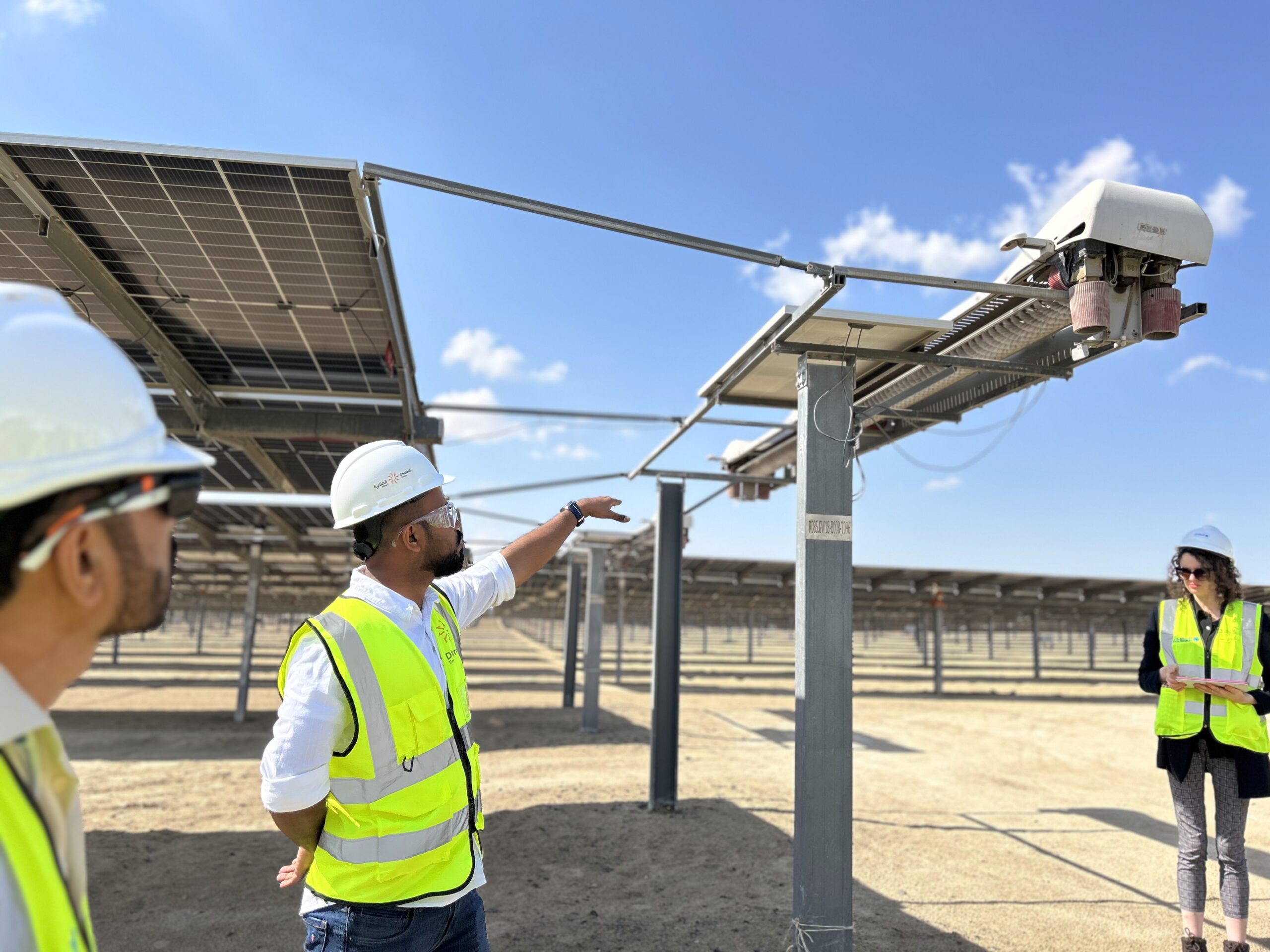
Robots clean the panels to ensure optimal performance. Photo credit: The Astana Times/ Aida Haidar
Masdar’s commitment to renewable energy extends far beyond the UAE. The company’s projects now span over 40 countries across six continents. Among them is a partnership with Kazakhstan to develop a wind power plant in the Zhambyl Region.
In an interview with The Astana Times, Alobaidli shared that wind projects require more time to develop than solar plants due to the need for at least 12 months of data collection to ensure bankability.
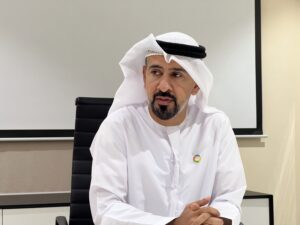
Masdar’s COO, Abdulaziz Alobaidli, welcomed us on the site. Photo credit: Putu Indah Savitri, journalist from Indonesia
“We’ve installed wind masts to measure wind speed, direction, and seasonality, which will inform the plant’s design and feasibility in the region,” he explained.
Kazakhstan is not Masdar’s first venture into Central Asia. The company’s journey in the region began in Uzbekistan with the Nur Navoi solar plant. Once operational, it will provide power to 31,000 households and avoid 150,000 tonnes of CO2 emissions annually. In Azerbaijan, Masdar developed the Garadagh Solar Plant, which will generate enough energy to power 110,000 homes while reducing emissions by 200,000 tons annually.
Masdar has also left its mark in Afghanistan, where it installed solar home systems for remote villages in Helmand province, transforming lives in communities previously without electricity. These efforts underscore not only the scale of Masdar’s ambitions but also its commitment to bringing clean energy to regions where it is needed most.
Reflecting on my visit to Al Dhafra, I am filled with a sense of possibility. The progress the world has made in renewable energy is truly remarkable, yet it is only the beginning. The challenge now is to sustain this momentum, ensuring that innovations in technology and vision continue to guide us toward a cleaner, more sustainable future.
The column was written during my trip to Abu Dhabi Sustainability Week 2025 (ADSW) in the UAE this past January.

